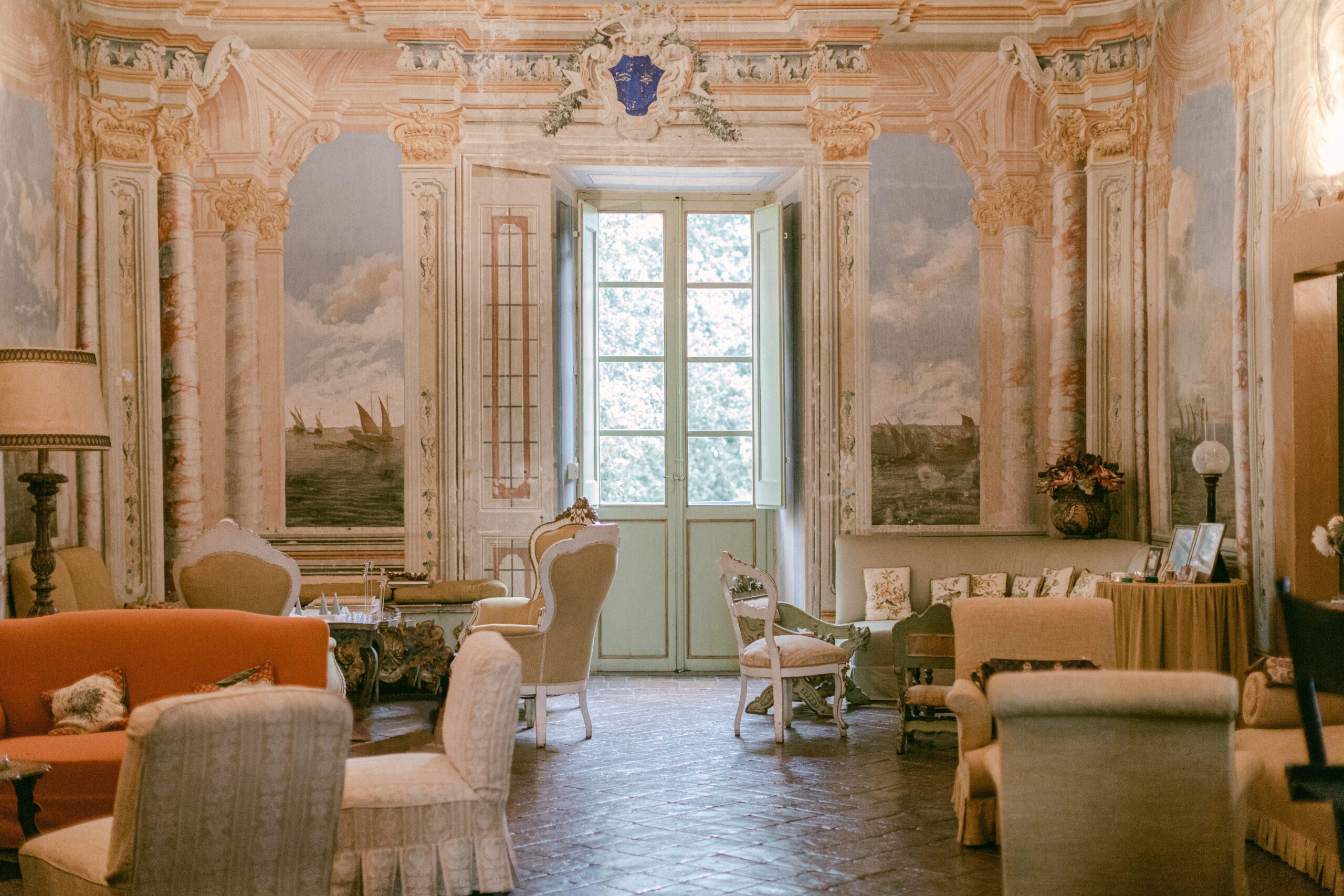The History of
Villa Muti Bussi
A journey through time across centuries of nobility, art, and prestige: the perfect setting for your unforgettable event
The Villa Bussi of Viterbo, also known as Casino Bussi, owes its name to its original function as a hunting lodge. The current structure was built in 1737 by architect Giuseppe Prada on a pre-existing building, probably dating back to the 16th century, located in the Bel Sasso or Bel Poggio estate.
The Bussi were a family from Viterbo with ancient origins, active since the 13th century. Initially involved in industry and commerce, they quickly became wealthy, acquiring prominent positions in local affairs and within the Church, with some members becoming ecclesiastics and condottieri.
In addition to copper trading, the Bussi quickly ventured into fabric trading, as well as money-changing activities and pharmacy management. Their presence in Viterbo and Corneto (now Tarquinia) suggests that they managed trade exchanges between the port of Corneto and Viterbo, probably also involving spices. This accumulation of wealth granted them increased social prestige, with Luca Bussi, a pharmacist, becoming priore of the Commune of Viterbo in 1403.
Over generations, other family members distinguished themselves through administrative and financial roles. Petruccio Bussi was the factotum of Count Everso dell'Anguillara, while his brother Domenico succeeded in managing the pharmacy and became treasurer of the Patrimony province, lending large sums of money to Ranuccio Farnese. Another family member, Luciano Bussi, obtained control of customs exports from the Papal Patrimony in 1458.
In the following centuries, the Bussi family gave rise to figures such as the Knights of Malta, Papirio and Anton Domenico. The former was commander of a papal galley and distinguished himself in battles against pirates between Civitavecchia and Ponza, while the latter was a heroic defender of Candia and commander of the papal navy. The villa is inextricably linked to the family's memory, as evidenced by the frescoes in the first-floor Gallery, commissioned by Commander Papirio, which depict their military conquests.
Finally, it is to Pier Francesco Bussi, known as Giovanni Battista, appointed cardinal by Benedict XIV in 1759, that we owe the construction of the late Baroque chapel of the villa, located on the ground floor on the right side.
BE A PART OF VILLA MUTI BUSSI’S HISTORY

